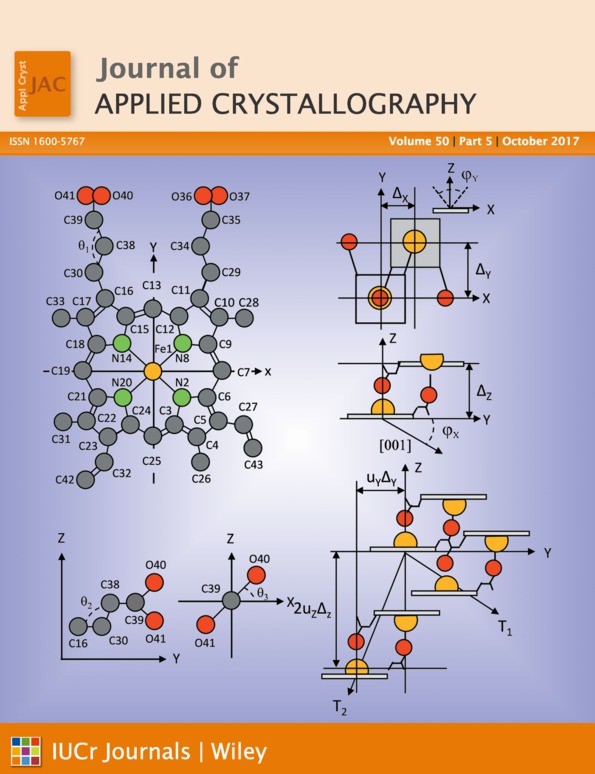Reconstructing detailed line profiles of lamellar gratings from GISAXS patterns with a Maxwell solver
Abstract
Laterally periodic nanostructures have been investigated with grazing-incidence small-angle X-ray scattering (GISAXS) by using the diffraction patterns to reconstruct the surface shape. To model visible light scattering, rigorous calculations of the near and far field by numerical solution of Maxwell's equations with a finite-element method are well established. The application of this technique to X-rays is still challenging, owing to the discrepancy between the incident wavelength and the finite-element size. This drawback vanishes for GISAXS because of the small angles of incidence, the conical scattering geometry and the periodicity of the surface structures, which allows a rigorous computation of the diffraction efficiencies with sufficient numerical precision. To develop metrology tools based on GISAXS, lamellar gratings with line widths down to 55 nm were produced by state-of-the-art electron-beam lithography and then etched into silicon. The high surface sensitivity of GISAXS in conjunction with a Maxwell solver allows the detailed reconstruction of the grating line shape for thick non-homogeneous substrates as well. The reconstructed geometric line-shape models are statistically validated by applying a Markov chain Monte Carlo sampling technique which reveals that GISAXS is able to reconstruct critical parameters like the widths of the lines with sub-nanometre uncertainty.




